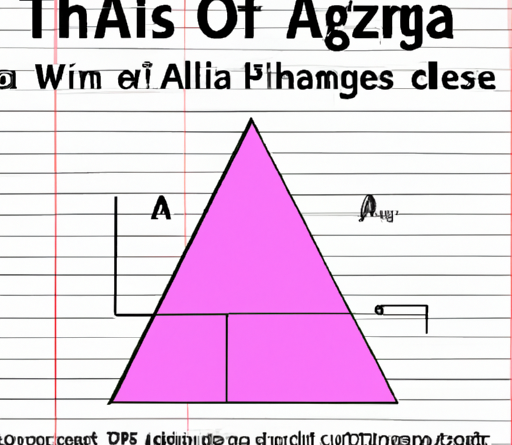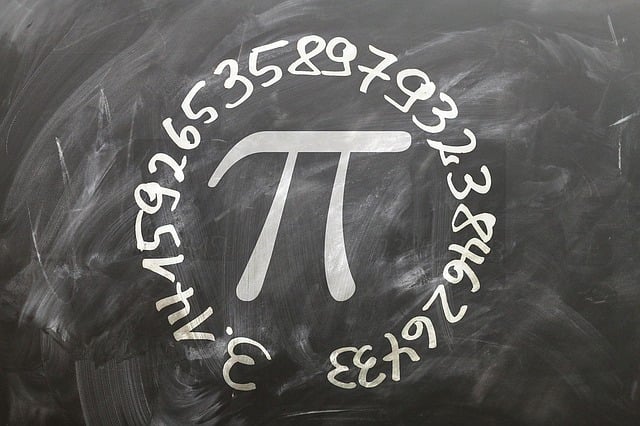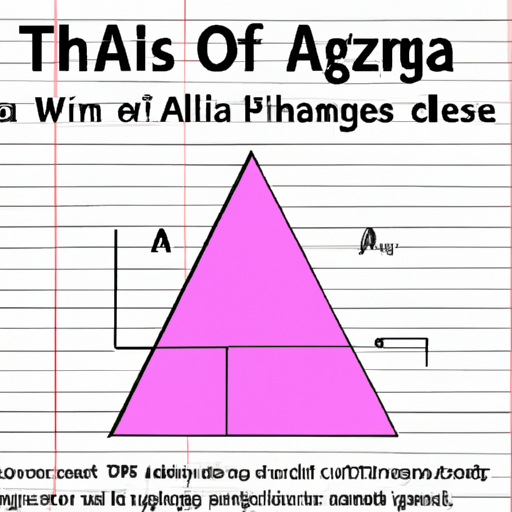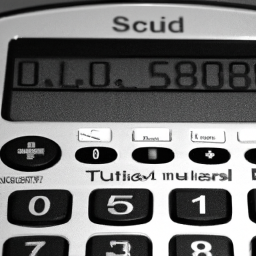
Have you ever wondered how to find the area of a triangle? It may seem like a complex math problem, but fear not! I’m here to break it down for you in a friendly and easy-to-understand way. In this article, we’ll explore the step-by-step process of finding the area of a triangle and you’ll become an expert in no time.
First and foremost, let’s define what exactly the area of a triangle is. The area of a triangle is the amount of space that is enclosed within its three sides. It is usually measured in square units, such as square inches or square centimeters. To find the area of a triangle, we’ll need to use a simple formula that involves the length of the base and the height of the triangle. Don’t worry if you’re not familiar with these terms yet, I’ll explain everything in detail later on.
So, if you’re ready to dive into the fascinating world of triangle areas, strap in and get ready to learn something new! In the following paragraphs, we’ll go through each step of the process and by the end of this article, you’ll have a clear understanding of how to find the area of a triangle.

Table of Contents
How to Find the Area of a Triangle
Definition of a Triangle
Before diving into the methods of finding the area of a triangle, it is important to understand what exactly a triangle is. A triangle is a polygon with three sides and three angles. It is the simplest polygon that exists in Euclidean geometry. Triangles play a crucial role in various fields of mathematics, science, and everyday life.
Properties of a Triangle
Triangles possess several properties that are important to consider when calculating their area. Here are some key properties:
- The sum of the interior angles of a triangle is always 180 degrees.
- The length of any side of a triangle must be less than the sum of the lengths of the other two sides, and greater than their difference.
- Triangles can be classified based on their sides and angles.
Types of Triangles
When it comes to types of triangles, there are a few major classifications:
- Equilateral Triangle: A triangle with three sides of equal length and three equal angles of 60 degrees.
- Isosceles Triangle: A triangle with at least two sides of equal length.
- Scalene Triangle: A triangle with no sides of equal length.
- Right Triangle: A triangle with one angle measuring 90 degrees.
Formula to Find the Area of a Triangle
Basic Formula
The most basic formula to find the area of a triangle is by using its base and height. The formula is: Area = (Base * Height) / 2
Using Base and Height
To understand the concept of base and height in a triangle, imagine a triangle drawn on a piece of paper. The base is a straight line segment that acts as the bottom of the triangle, while the height is the perpendicular distance from the base to the opposite vertex.
To calculate the area using the base and height, simply multiply the base by the height and divide the result by 2.
Using Sine Function
Another method to find the area of a triangle involves using the sine function. The formula is as follows: Area = (Side1 * Side2 * sin(Angle)) / 2
In this formula, Side1 and Side2 represent two of the triangle’s sides, and Angle is the angle formed between these two sides.
Understanding the Basic Formula
To further comprehend the basic formula for finding the area of a triangle, let’s break it down and explore its logical derivation.
To derive the formula, consider splitting the triangle into two right-angled triangles by drawing a perpendicular line from one of the vertices to the base. The height of the triangle is equal to the length of this perpendicular line.
The area of each right-angled triangle is given by: Area = (Base * Height) / 2
By summing the areas of the two right-angled triangles, which together form the original triangle, we obtain the formula: Area = (Base * Height) / 2
Examples Using the Formula
To illustrate the usage of the basic formula, consider an equilateral triangle with a base of 6 units and a corresponding height of 5.2 units. Plugging these values into the formula, we find that the area of the triangle is: Area = (6 * 5.2) / 2 = 15.6 square units
Using Base and Height
Now that we have understood the concept behind using the base and height to calculate the area of a triangle, let’s explore it further with some examples.
First, consider a triangle with a base of 8 units and a height of 4 units. To find the area, simply plug these values into the formula: Area = (8 * 4) / 2 = 16 square units
In another example, let’s assume the base is 12 units and the height is 6 units. Plugging these values into the formula, we find that the area of the triangle is: Area = (12 * 6) / 2 = 36 square units

Using Sine Function
The sine function approach provides an alternative method to calculate the area of a triangle. Let’s delve into it.
Introduction to the Sine Function
The sine function relates the ratios of the lengths of the sides of a triangle to the sine of its angles. In the context of finding the area of a triangle, the sine function allows us to utilize the side lengths and an angle to calculate the area.
Using the Sine Function to Find the Area
To employ the sine function in finding the area of a triangle, we need two side lengths and the angle formed between them. The formula is: Area = (Side1 * side2 * sin(Angle)) / 2
For example, consider a triangle with Side1 measuring 5 units, Side2 measuring 7 units, and an angle between them of 30 degrees. Plugging these values into the formula, we find that the area of the triangle is: Area = (5 * 7 * sin(30)) / 2 ≈ 10.19 square units
Examples Showcasing the Use of Sine Function
To further showcase the application of the sine function, let’s consider a triangle with Side1 measuring 4 units, Side2 measuring 6 units, and an angle between them of 45 degrees. Plugging these values into the formula, we find that the area of the triangle is: Area = (4 * 6 * sin(45)) / 2 ≈ 8.49 square units
Case Studies on Finding the Area of a Triangle
Moving beyond the mathematical realm, let’s explore some real-life examples and practical applications where finding the area of a triangle is essential.
Real-Life Examples
- Land Surveying: Determining the area of irregularly shaped pieces of land often involves breaking them down into triangles for accurate calculations.
- Architecture: Architects use triangle area calculations to determine the amount of materials required for construction projects.
- Agriculture: Farmers utilize triangle area calculations to measure the precise area of their fields for improved crop management.
Practical Applications
- Construction: Calculating the area of triangular building facades helps determine the amount of paint or cladding required.
- Engineering: Structural engineers rely on triangle area calculations to design load-bearing structures.
- Geometry and Trigonometry: The study of triangles and their area calculations serves as a foundation for more advanced mathematics.

Common Mistakes to Avoid
When attempting to find the area of a triangle, it is important to be aware of and avoid common errors. Here are a few tips to improve accuracy in your calculations:
- Ensure that the measurements of the sides and angles are accurate.
- Remember to convert angle measurements to radians if required.
- Double-check your calculations to avoid simple arithmetic mistakes.
Alternative Methods to Find the Area of a Triangle
While the base and height formula and the sine function are commonly used, there are alternative methods worth exploring.
Using Heron’s Formula
Heron’s formula is a valuable alternative for finding the area of a triangle when its side lengths are known. This formula relies solely on the side lengths of the triangle. The formula is as follows: Area = √(s(s-a)(s-b)(s-c))
In this formula, ‘s’ represents the semi-perimeter of the triangle, while ‘a’, ‘b’, and ‘c’ denote its three side lengths.
Using the Side Lengths and Angles
In some cases, the side lengths and angles of a triangle are provided, and this information can be used to find the area. Here, trigonometric functions such as sine, cosine, and tangent come into play.
By combining the given side lengths and angles, it is possible to find the area using various trigonometric ratios and formulas.

Applications of Finding the Area of a Triangle
The ability to calculate the area of a triangle has numerous practical applications in various fields. Some notable areas where this skill is applied include:
Architecture and Construction
Architects and construction professionals rely on accurate area calculations to determine resources needed for projects, such as materials, paint, and flooring.
Engineering
In engineering disciplines, calculating the area of triangular components is vital for designing structures, bridges, and other constructions.
Geometry and Trigonometry
The study of triangle area calculations forms the basis for advanced mathematical concepts, including calculus and higher-dimensional geometry.
Conclusion
In conclusion, finding the area of a triangle is an essential skill that has relevance in numerous areas of mathematics, science, and everyday life. By understanding the different methods, formulas, and properties associated with triangles, you can accurately calculate their area. Whether you employ the basic formula using base and height or utilize the sine function, these calculations play a crucial role in fields such as architecture, engineering, and geometry. So next time you encounter a triangle, remember the methods discussed here to effortlessly find its area.




